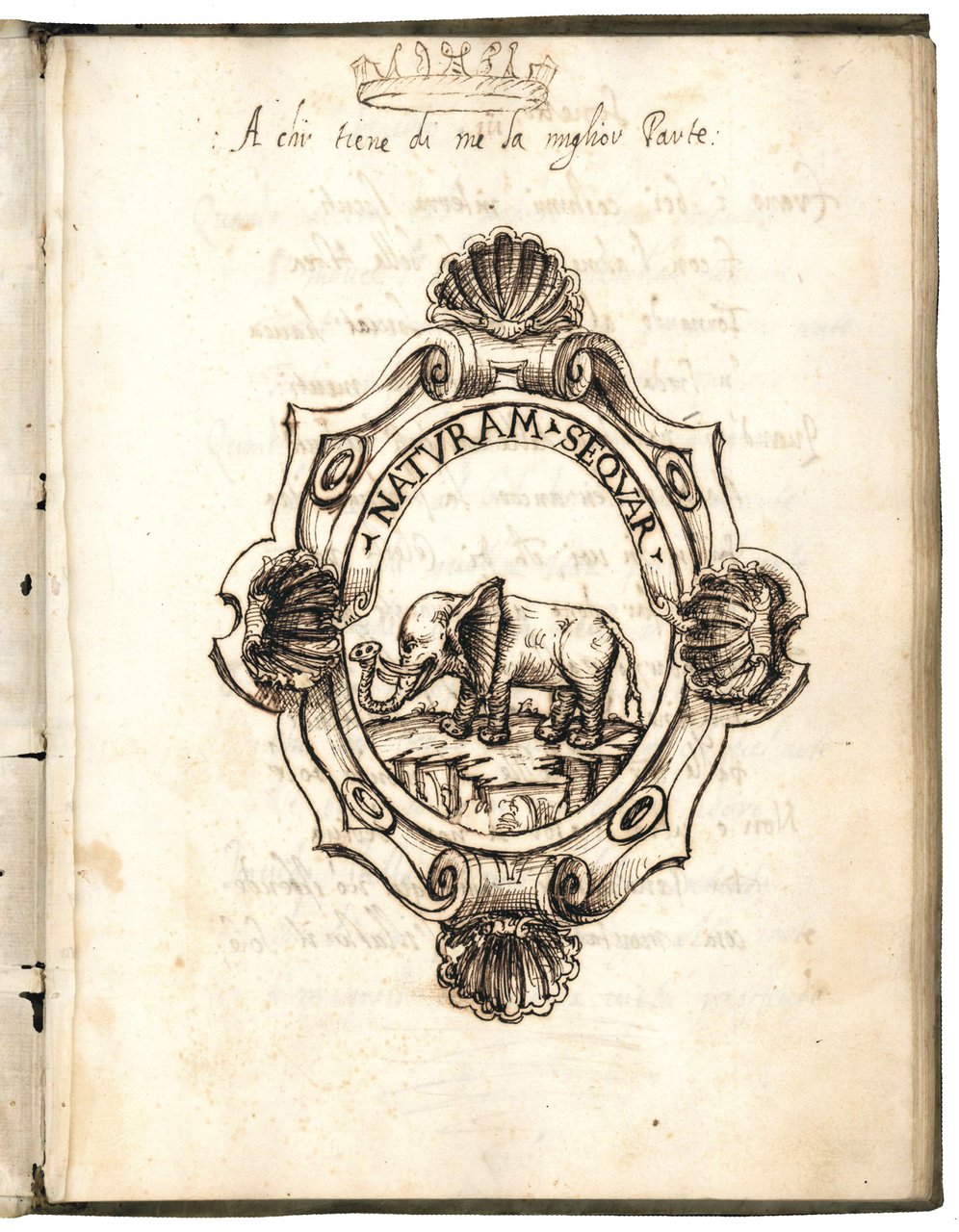
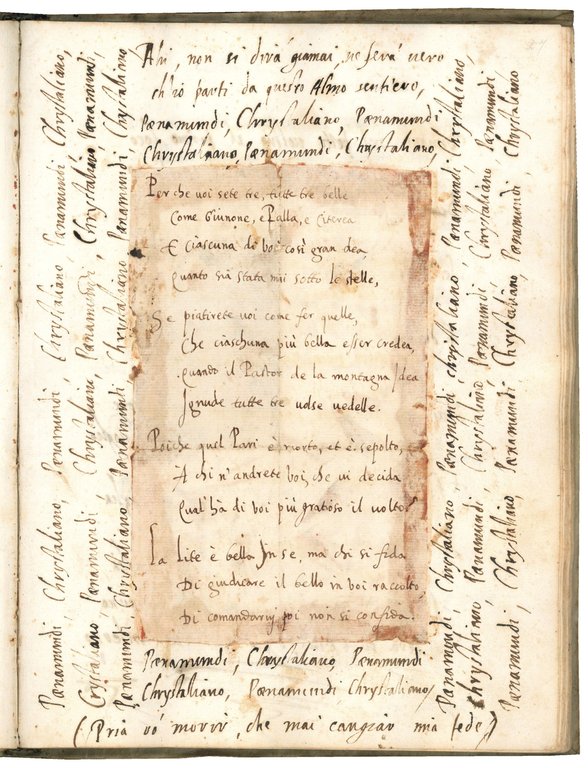
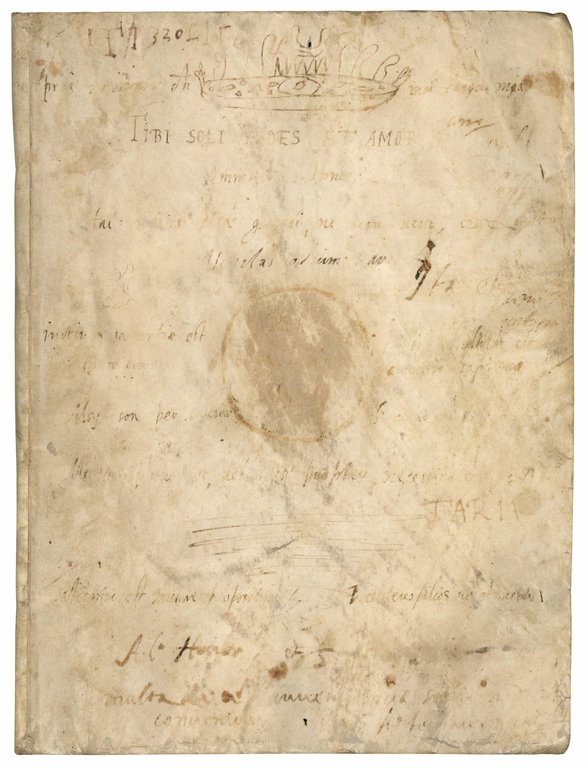
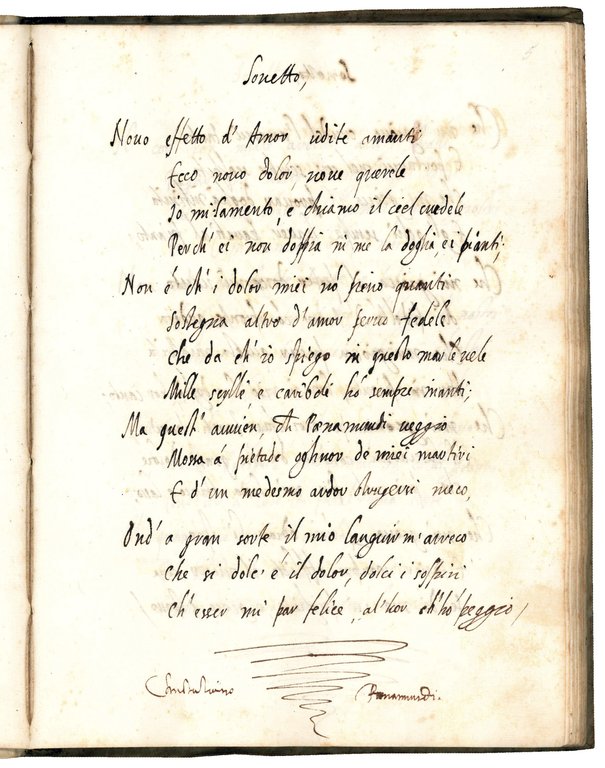
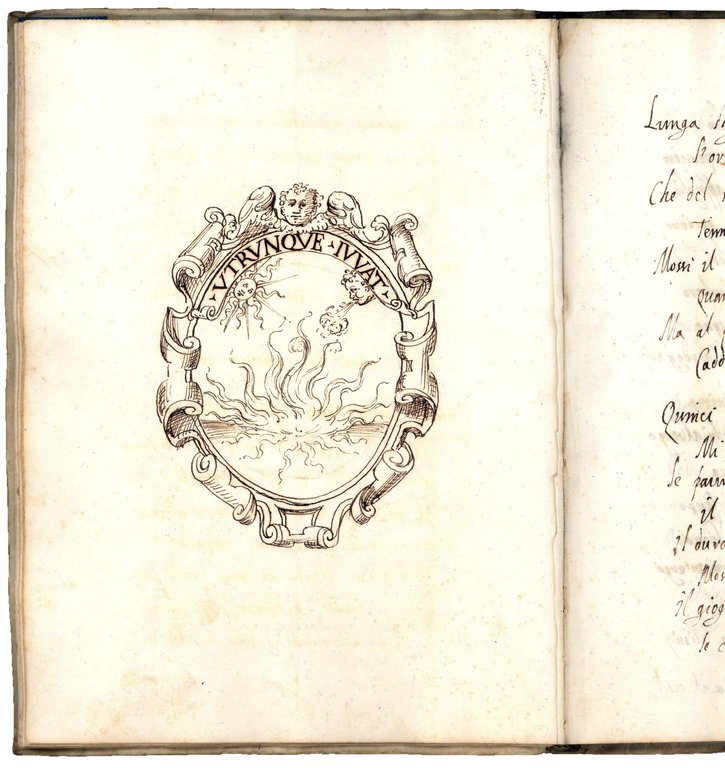
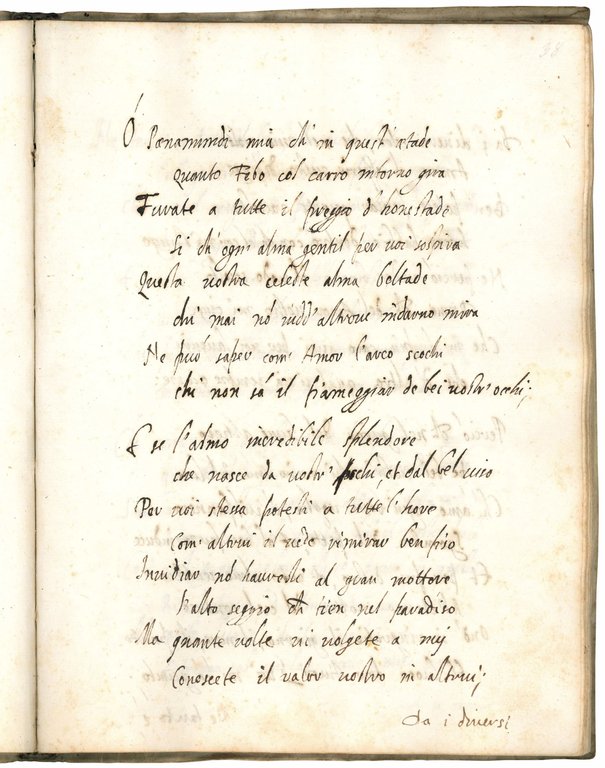
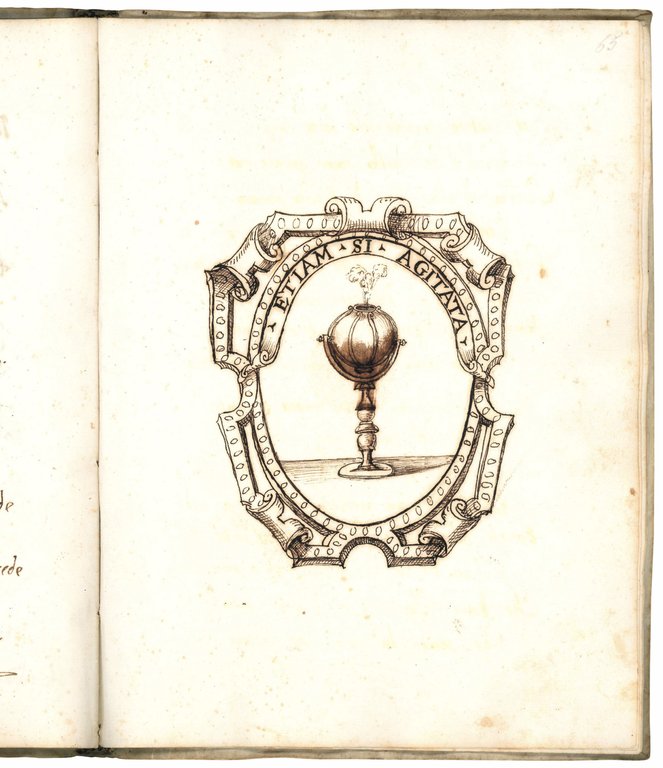
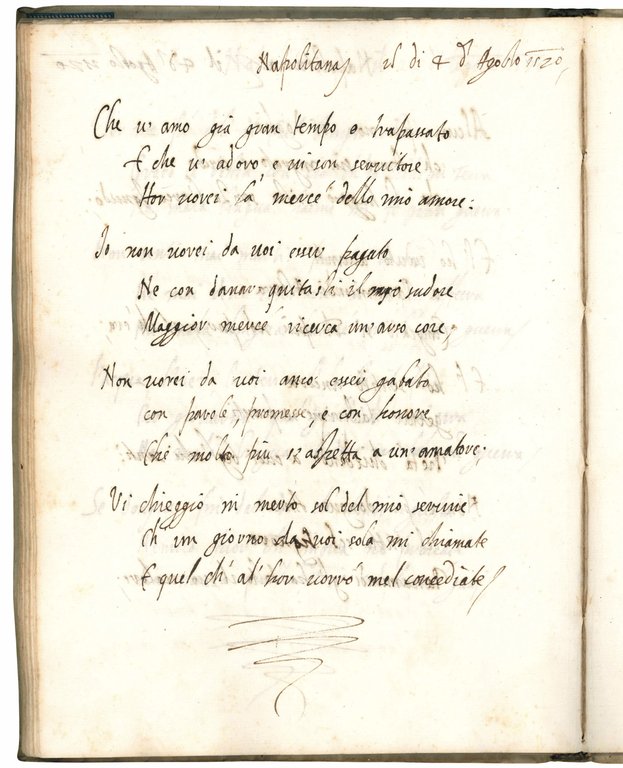
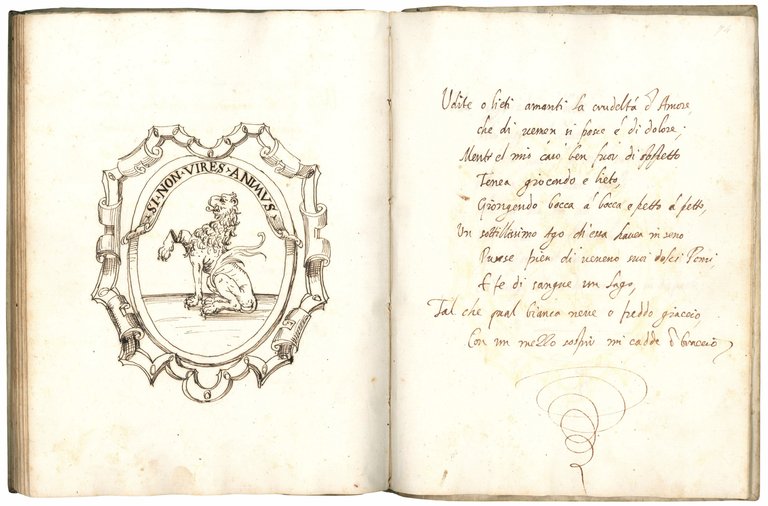
Libri antichi e moderni
ILLUSTRATED RENAISSANCE ‘CANZONIERE''
First line of text: "A chi tiene di me la miglior Parte:" (l. I2r). Manuscript on paper. Italy (Ferrara or Bologna?), ca. early 1570s.
32000,00 €
Govi Libreria Antiquaria
(Modena, Italie)
Le corrette spese di spedizione vengono calcolate una volta inserito l’indirizzo di spedizione durante la creazione dell’ordine. A discrezione del Venditore sono disponibili una o più modalità di consegna: Standard, Express, Economy, Ritiro in negozio.
Condizioni di spedizione della Libreria:
Per prodotti con prezzo superiore a 300€ è possibile richiedere un piano rateale a Maremagnum. È possibile effettuare il pagamento con Carta del Docente, 18App, Pubblica Amministrazione.
I tempi di evasione sono stimati in base ai tempi di spedizione della libreria e di consegna da parte del vettore. In caso di fermo doganale, si potrebbero verificare dei ritardi nella consegna. Gli eventuali oneri doganali sono a carico del destinatario.
Clicca per maggiori informazioniMetodi di Pagamento
- PayPal
- Carta di Credito
- Bonifico Bancario
-
-
Scopri come utilizzare
il tuo bonus Carta del Docente -
Scopri come utilizzare
il tuo bonus 18App
Dettagli
Descrizione
266x198 mm. 76 leaves including 16 blank, recently numbered in pencil. Collation: I10-1 II10 III8-1+1 IV10 V10 VI10 VII8 VIII10+1 + 1 flyleaf. Leaves III1v, III2r, III3v, III4, III5r, IV9v, IV10, VI2, VI5v, VI6-10, VII1-4, VII8v, VIII1-2, VIII6, VIII7r, VIII8v, VIII9v, and VIII10 are blank. Lacking leaves I1 and III6 (blank?). Quires III and VIII have one added leaf each. The leaf added to quire III contains a poem written on an attached leaflet surrounded by the names Paenamundi (the beloved) and Chrystaliano (the lover-poet) signed multiple times across the page. Full-page pen drawings of emblems on ll. I2r (an elephant standing near a cliff with the motto “Naturam sequar”, topped with a crown and the opening verse “A chi tiene di me la miglior Parte” – ‘To the one who holds of me the best Part'), III5v (sun and wind stoking a large fire beneath with the motto “Utrunque iuvat”), VII8r (smoke emanating from an ampoule with the motto “Etiam si agitata”), and VIII7v (a rampant lion with a maimed paw and the motto “Si non vires animus”; the same emblem is painted in the Sala delle Imprese of the Palazzina Marfisa d'Este in Ferrara). Catchwords or decorative penwork at the foot of every page. Watermark: the Paschal lamb in a circle topped by the letter “R” in another circle. Contemporary flexible vellum, the front cover bearing at the top a drawing of a crown with the dedication “tibi soli fides et amor” in capital letters, and at the center a circle with the names Paenamundi and Chrystaliano written within (discernable only with a Wood's lamp), with several verses and notes in Italian and Latin permeating throughout (lacking ties and the front flyleaf, back cover partly stained). Later label with shelf mark (“IF-8 Cod. 106”) on the front pastedown. In addition to their appearance on the front cover, the names Paenamundi and Chrystaliano also appear together on ll. I6r and II10r, as well as multiple times on the leaf added to quire III. On l. II6r is a sonnet by a friend addressed to the poet Chrystaliano. The poem beginning on l. V1r is dated (at the end) 12 June 1571 (l. V3v). The eight “villanelle” (described here as “Napolitane”) in the last quire are dated 2 June (3 poems), 20 April (2 poems), 22 July (1 poem) and 4 August (2 poems), all in the year 1570.
Condition: Small holes to l. I2 slightly affecting the text and the drawing, small loss of paper on l. V6 due to abrasion caused by the ink of a cancellation in a line, otherwise a very good, genuine copy.
Provenance: Catalogo di libri che si trovano vendibili presso Giuseppe Veroli e Comp. Successori di Giuseppe Molini, Florence, 1830 (Supplemento primo, Libri manoscritti), p. 10, no. 123 (“Poesie d'anonimo sotto il nome di Cristaliano per donna figurata sotto il nome di Paenamundi. Cartaceo, in fol. del sec. XVI”).
A fascinating late-Renaissance canzoniere, adopting various genres of poetic compositions (sonnets, stanzas, canzoni, and Neapolitan villanelle) and featuring Paenamundi, an almost divinely beautiful maiden imbued with equally extraordinary virtue, and Christaliano, the lover-poet who pines for her and idealizes her in a manner verging on sacrilegious. The names Paenamundi and Chrystaliano are clearly pseudonyms, probably relating, respectively, to the pain caused by the beauty and cruelty of the beloved, and to the lover-poet's propensity for both love and heartache. The two names are probably taken from a Spanish chivalric poem entitled Cristalián de España by Beatriz Bernal (ca. 1504-1563), which was originally printed in Valladolid in 1545 and later translated into Italian in Venice, first in 1558 and then again 1609. A copy of the first Italian edition was owned by the humanist and historian of the Ferrarese court, Alessandro Sardi (1520-1588) (cf. G. Petrella, Libri e cultura a Ferrara nel secondo Cinquecento: la biblioteca privata di Alessandro Sardi: II Edizione dell'Inventario, in: “La Bibliofilía”, vol. 105, no. 3, Septembe

